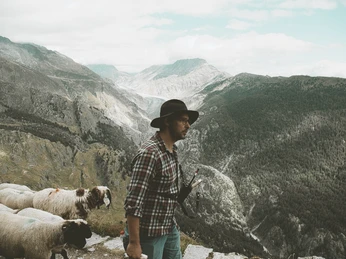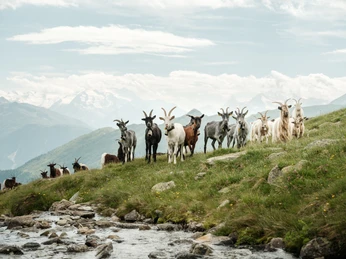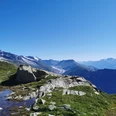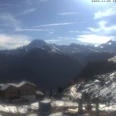- Photos & Map
How would you like to arrive?
- Website
- Description
- Good to know
- Nearby
The Belalp at 2,094 metres above sea level towers high above the Rhone Valley and offers spectacular views of the Aletsch Glacier, the Matterhorn and numerous four-thousand-metre peaks. As an alp with a rich tradition and deep-rooted history, it has developed into one of the most popular winter sports destinations in Switzerland.
As early as the 19th century, the Belalp attracted alpinists and naturalists - most notably the British scientist John Tyndall, who carried out important research into glaciology here. Today, the region combines tradition with modern winter sports and delights skiers, snowboarders and nature lovers alike.
The Belalp ski area offers over 56 kilometres of perfectly groomed pistes for every level, from family-friendly runs to sporting challenges such as the legendary Hexenabfahrt. Deep-snow fans will find their happiness in the extensive freeride zones, while sledgers can enjoy a speedy ride on the 7-kilometre-long toboggan run from Belalp to Blatten. For winter hikers and snowshoers, there are numerous routes that lead through the magical winter landscape.
One of the winter highlights is the Belalp Witch, where participants dress up in witches' costumes and enjoy the slopes in a unique atmosphere. Those who prefer a more cosy atmosphere can stop off at the historic Hotel Belalp, which sits majestically on a rocky outcrop, and enjoy the impressive backdrop.
The Belalp remains true to its alpine tradition: in addition to tourism, alpine farming plays an important role, and the lively customs can also be felt in summer at traditional festivals and events. Whether hiking on idyllic hiking trails, enjoying a rapid Trottibike descent or simply savouring the breathtaking views - Belalp is a magical place.
Good to know
General information
Parking Available
Bus stop available
Foreign Language
Other Furnishing/Equipment
Children's Playground (outdoors)
Payment methods
Accessibility
- Partially wheelchair-accessible
- Toilets not wheelchair-accessible
Directions & Parking facilities
From Western Switzerland: A9 Lausanne - Vevey, or Northwestern Switzerland: A12 Bern - Vevey: A9 - Sierre: Main road Sierre - Brig
From Northwestern Switzerland: A6 Bern - Thun - Spiez: Main road Spiez - Kandersteg (car shuttle Lötschberg Tunnel) - Goppenstein - Gampel - Brig
From Eastern and Central Switzerland: Andermatt - Realp (year-round car shuttle Furka; in summer via Furka Pass) - Oberwald - Brig
From Ticino (in summer): Airolo - Nufenen Pass - Ulrichen – Brig
Or via Centovalli – Domodossola – Simplon Pass – Brig
From Italy (Aosta, Mt. Blanc Tunnel): Aosta - Grand Saint Bernard Tunnel (in summer via the pass) - Martigny: A9 Motorway - Sierre: Main road Sierre – Brig
Or via Domodossola – Simplon Pass – Brig
Blatten bei Naters
From Brig, you can reach Blatten bei Naters via Naters.
Arrival by Public Transport
Blatten-Belalp is very easy and convenient to reach by train to Brig. From Brig, continue by post bus (624) to Blatten bei Naters, Luftseilbahn.
Contact person
Blatten-Belalp Tourismus AG
License (master data)
Blatten-Belalp Tourismus AG
Nearby













